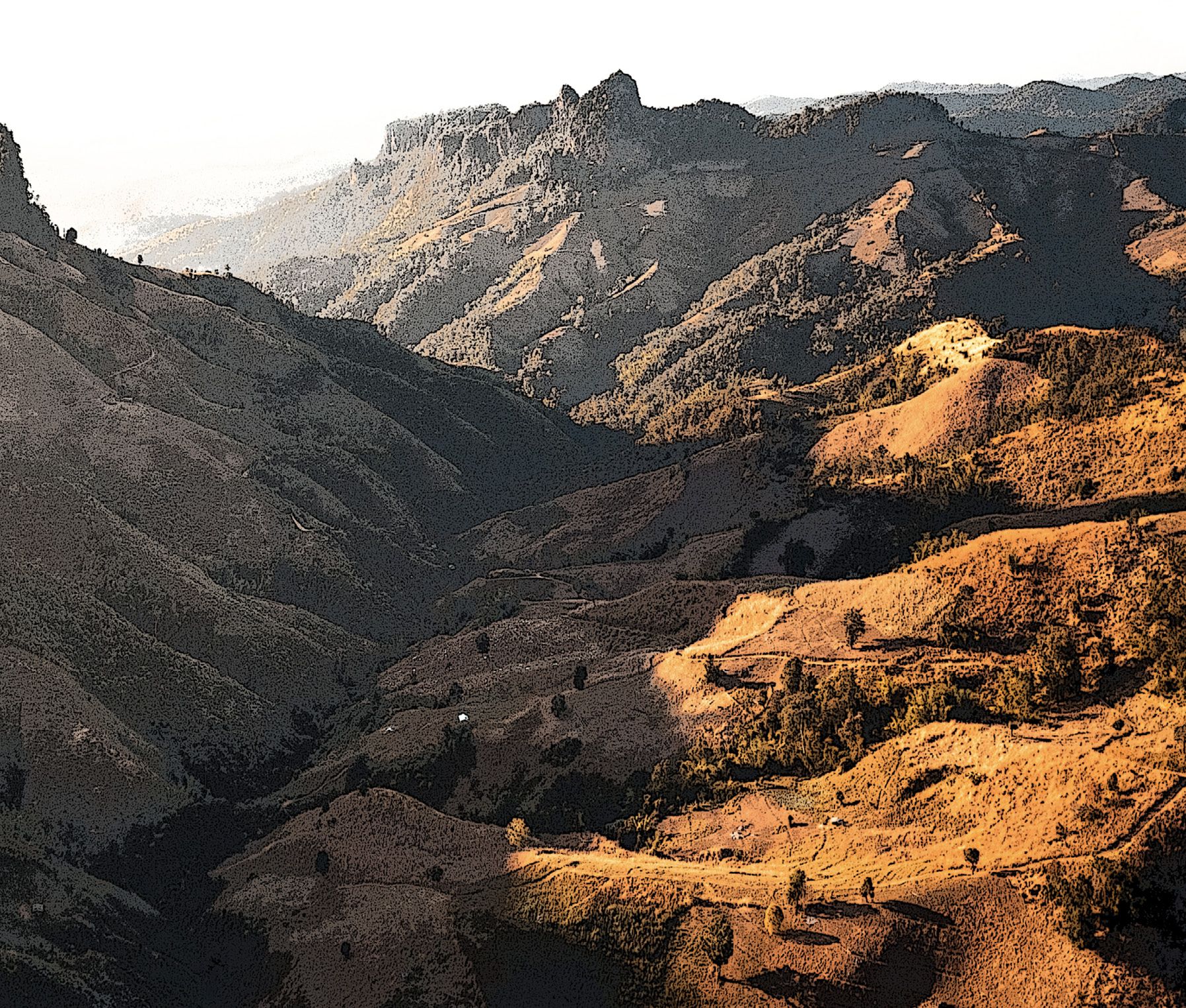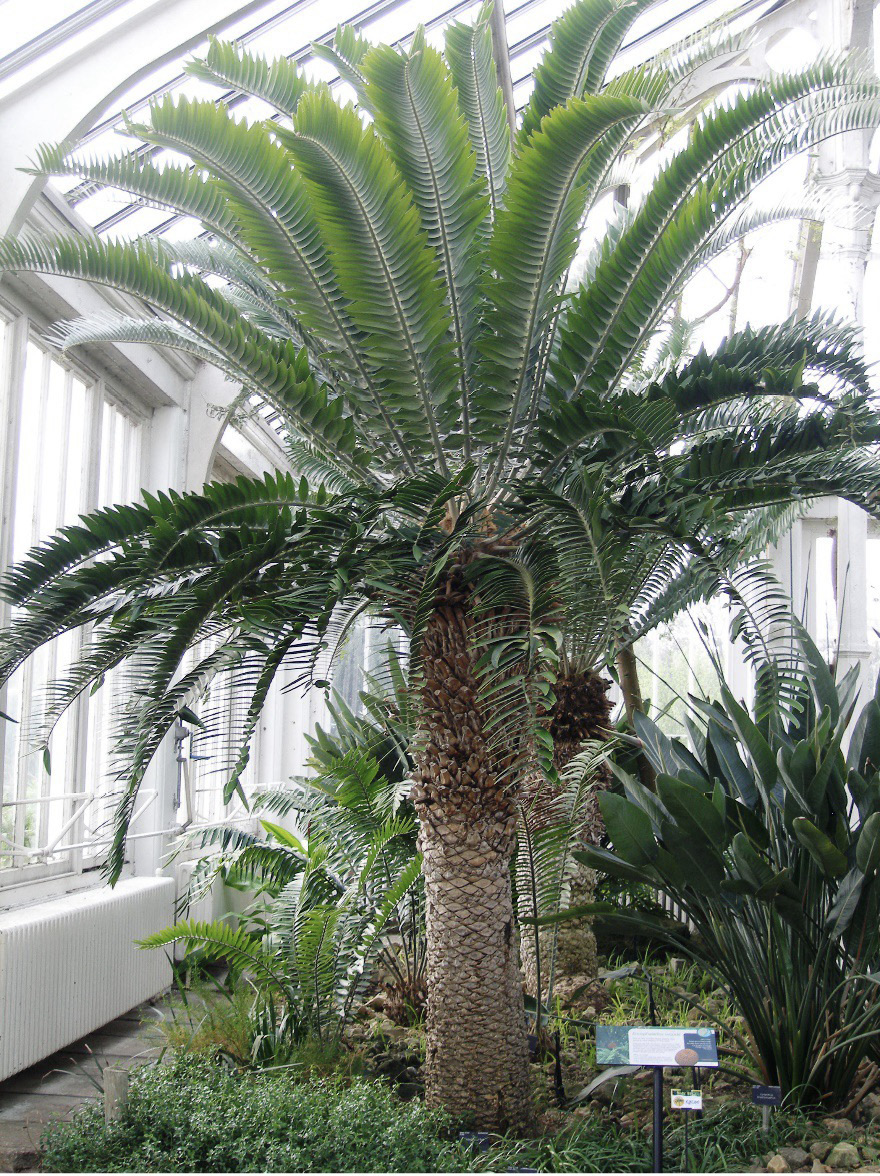
John Charles Ryan
Editorial

PLANT PERSPECTIVES 2/1 - 2025: 5–15
doi: 10.3197/whppp.63845494909752
Open Access CC BY 4.0 © The Author
 dentified recently in an isolated canyon on the Hawaiian island of Kaua‘i, Schiedea waiahuluensis is a member of the carnation family. The cliff-dweller is the 36th recorded species of Schiedea, all of which are endemic to Hawai‘i. The 345 known individuals of S. waiahuluensis inhabit small patches of soil in tiny fractures on the sheer rock faces of Kaua‘i’s Waimea Canyon (Figure 1). While uncovering a new species is historically momentous in itself, the event at the same time marked the first usage of drone technology to locate and collect an undescribed plant. In addition to taking aerial footage of the endemic, the team based at Hawai‘i’s National Tropical Botanical Garden (NTBG) developed and deployed a remotely controlled robotic sampling arm called a Mamba, suspended beneath the drone, to procure a herbarium specimen (Letman 2024). In 2019, additionally, drone imaging allowed NTBG to ‘rediscover’ Wood’s hau kuahiwi (Hibiscadelphus woodii), a hibiscus previously considered extinct (NTBG 2019). According to the researchers, ‘hidden floristic diversity is likely to emerge as we embark on this new era of exploration and documentation of cliff ecosystems’ (Wagner et al. 2024: 120, emphasis added).
dentified recently in an isolated canyon on the Hawaiian island of Kaua‘i, Schiedea waiahuluensis is a member of the carnation family. The cliff-dweller is the 36th recorded species of Schiedea, all of which are endemic to Hawai‘i. The 345 known individuals of S. waiahuluensis inhabit small patches of soil in tiny fractures on the sheer rock faces of Kaua‘i’s Waimea Canyon (Figure 1). While uncovering a new species is historically momentous in itself, the event at the same time marked the first usage of drone technology to locate and collect an undescribed plant. In addition to taking aerial footage of the endemic, the team based at Hawai‘i’s National Tropical Botanical Garden (NTBG) developed and deployed a remotely controlled robotic sampling arm called a Mamba, suspended beneath the drone, to procure a herbarium specimen (Letman 2024). In 2019, additionally, drone imaging allowed NTBG to ‘rediscover’ Wood’s hau kuahiwi (Hibiscadelphus woodii), a hibiscus previously considered extinct (NTBG 2019). According to the researchers, ‘hidden floristic diversity is likely to emerge as we embark on this new era of exploration and documentation of cliff ecosystems’ (Wagner et al. 2024: 120, emphasis added).

Figure 1.
Waimea Canyon is located on the western side of the island of Kaua‘i.
Source: Wikimedia Commons (Frank Schulenburg): https://commons.wikimedia.org/wiki/File:Waimea_Canyon,_Kaua%CA%BBi.jpg
About 20,000 kilometres away, in the oNgoye Forest Reserve of South Africa’s easternmost province, KwaZulu-Natal, botanists are harnessing the potential of drones, remote sensing and AI to find a female partner for the Wood’s cycad (Encephalartos woodii), labelled ‘the world’s loneliest tree’ (Pallardy 2024). As indicated by fossil evidence from 280 million years ago, cycads are among the world’s most ancient flora (Jones 2002). Palm-like in appearance, the trees are dioecious, so either female or male. Extinct in the wild since the early 1900s, moreover, E. woodii ranks as one of the planet’s rarest plants. All 500 specimens held in botanical gardens and collections across the globe are clones of the same male collected from oNgoye in the late-nineteenth century (Figure 2). Incapable of reproducing by natural means and unable to diversify its genetic pool, the species remains acutely susceptible to diseases and other stressors. Consequently, botanists are combining drone technology and AI to detect possible female cycads in aerial images of the forest.

Figure 2.
All Wood’s cycads (Encephalartos woodii) are in cultivation, including this specimen at the Royal Botanic Gardens, Kew.
Source: Wikimedia Commons (Dryas): https://commons.wikimedia.org/wiki/File:Encephalartos_woodi_RBGK.JPG
The above examples of Schiedea waiahuluensis, Hibiscadelphus woodii and Encephalartos woodii underline the long, intersecting and, oftentimes, contentious histories of botanical life and technology. As David Miles (2016) and other archaeologists have vividly illustrated, many of the social, political and religious structures of Neolithic societies formed around polished stone axes used to clear forests for farming and process timber for fuel, among other purposes. From weathered mould-board ploughs drawn by oxen to glistening combine harvesters controlled by GPS, technology has been integral to the transformation of agricultural paradigms and practices. Etymologically, that the term plant (vegetation) eventually came to denote plant (factory) signifies this peculiar historical interpenetration. In the late-eighteenth century, plant began to refer to an industrial complex and, later, in a pejorative sense, a spy (Harper 2025). By the late 1800s, cinematic and botanical advances also started to intertwine. As film enabled new understandings of vegetal life, flowering plants, in turn, inspired keen public interest in the moving image (Gaycken 2015). Through time-lapse in particular, events in the lives of plants became more perceptible and thus appreciable. Presently, in the Anthropocene context, commuters in Dhaka, Istanbul, Kinshasa, Mexico City, Mumbai, New York, Tokyo and other megacities interact, often unwittingly, with plants on an everyday basis through the energy unleashed from petroleum produced from their ancient remains.
The ‘new era of exploration and documentation’ announced by botanist Warren Wagner and coauthors (2024) echoes the perils of technological utopianism and botanical imperialism. Nonetheless, what is irrefutable is that technology will continue to shape human-plant relations including issues of conservation. Ecologists have become more and more reliant on drones and AI to locate ‘plant diversity darkspots’, improve species loss predictions, monitor endangered flora trafficking and respond to human-forest conflicts especially through enhanced data interpretation (Ondo et al. 2024). Machine learning and modeling techniques are facilitating more precise determinations of the extinction risk of unassessed flora (Bachman et al. 2024). All the while, AI is contributing to the translation of human observations of plants and other organisms into scientific knowledge. For ecologist Sam Reynolds and colleagues, AI has the potential to expand ‘the scope of human imagination or creativity’ by pinpointing gaps or ‘surprises’ in data, models, methods and prior studies (Reynolds 2025: 2).
Yet, the same technologies applied to conservation can be exploited by rare plant poachers, illegal timber harvesters, transnational land grabbers and government regimes bent on suppressing environmental activism particularly among Indigenous peoples. There is also the lurking danger of AI colonialism in which data originating in the Global South is processed by centres in the Global North to inform AI systems (Muldoon and Wu 2023). This data power differential can result in the imposition of AI-based mandates on the South along with the erasure of local knowledge and traditions. Cognisant of the need to minimise such risks, ecologists emphasise the crucial importance of ‘interdisciplinary collaboration’ between AI specialists, conservationists, social scientists, local communities and Indigenous knowledge-holders to creating accurate and ethical AI models (Reynolds 2025: 203).
This, indeed, is an area where interdisciplinary plant studies offers a generative intervention. In response to the global biodiversity crisis, the steadily growing field presents a unique framework for interrogating plant-technology conjunctions. The field critiques the dominant cultural narrative of flora as the passive objects of technological manipulation and promotes awareness of the significance of vegetal diversity in an increasingly technologised world by drawing from the interrelated domains of human-plant studies (grounded in cultural studies), critical plant studies (philosophy), ethnobotany (anthropology), economic botany (anthropology), phytocriticism (literary analysis), plant geography and neurobotany (plant science).
Contributors of research articles to Volume 2, Issue 1 of Plant Perspectives address plant-technology intersections by theorising, contesting and applying ideas of ruderal futurism (Alex Young), alien flora (Harri Uusitalo et al.), archaeological storytelling (Zuzana Chovanec), plants as designers (Julian Rutten et al.) and photographic phytography (Epha J. Roe). In doing so, the authors underscore the capacity of interdisciplinary plant studies to remould and reimagine the prevailing cultural narratives of species such as the linden, mountain ash, oak, poppy, rose and spruce. The common thread connecting these heterogeneous approaches, timeframes and species is the narrative agency of botanical nature. In literary terms, plants often act as agents providing context, expressing meaning and conveying knowledge. The oral and written stories of various cultural traditions position plants as central characters. In some cases, plants serve as narrators who vocalise from their own standpoints, interact with other characters and form distinctive identities. Yet, as the five articles in this issue show us, plants are intrinsically narrative – their sensuous, corporeal presences in our lives communicate wordless stories of history, society, ecology and futurity.
In the issue’s opening article, ‘An Archaeology of Ruderal Futurism’, Alex Young interrogates the multifaceted relationship between ruderal plants and industrial capitalism. The conjunction of technology and narrative underpins the article’s approach to the lives of the ruderal species populating the margins of sidewalks, highways, railways, landing strips, mine sites and other disturbed landscapes, reflecting the origin of the term ruderal in the Latin noun rudus for ‘rubble’ or ‘ruins’. The British ecologist John Philip Grime and colleagues (1988) characterised ruderals as plant species capable of self-pollination, rapid seed release and other attributes that ‘confer resilience [in response to] frequently and severely disturbed habitats’ (35). Young develops a critique of ruderality through an insightful integrative reading of the work of Swiss botanist Albert Thellung (1881–1928), French garden designer Gilles Clément (b. 1943) and American media artist Andrea Callard (b. 1950). This fresh interpretation of the ruderal comprises three elements: ‘disturbed areas; a heterogeneous cohort of life (particularly vegetation) whose life-history traits and adaptive strategies correlate with living in disturbed areas; and the systems that produce disturbed areas alongside which life there spreads’. Considering this expansive conception of ruderality, especially the third element of ‘systems’, ruderal futurisms are necessarily post-capitalist and decolonial.
Young’s attention to ruderalism accords, in many ways, with the issue’s second article, ‘Alien Plants Between Practices and Representations: The Cases of European Spruce and Beach Rose in Finland’, by Harri Uusitalo, Heta Lähdesmäki, Kirsi Sonck-Rautio, Otto Latva, Hannu Salmi and Teija Alenius. Applying the concept of plantiness first formulated by geographers Lesley Head, Jennifer Atchison and Alison Gates (2012), the authors rethink the political ecology of the native-alien dichotomy in the Finnish context. The article’s approach to two introduced species, the European spruce (Picea abies) and the beach rose (Rosa rugosa), synthesises palaeoecology, ethnology, cultural history and linguistics. The varied array of data collated from pollen records, comparative etymology, historical texts and online content demonstrates the versatility of plant studies as an interdisciplinary framework. Uusitalo and colleagues reframe the dominant narrative of invasive species victimising local plants as a political construct derived from culturally inherited ideas of belonging and non-belonging. While the spruce became associated with pre-Christian traditions of sacred trees, the beach rose was first welcomed in Finland in the early-nineteenth century as a desirable addition to gardens but is now widely regarded as invasive. As the authors elaborate, ‘Finns were once encouraged to plant beach roses in their gardens, but nowadays the law demands that they be eradicated’. Of note, as well, is the article’s leveraging of digital methods to comprehend the transformation of societal attitudes towards introduced plants over time.
The narrativity of plants is the overarching concern of the issue’s third article, ‘Poppies and Women Under the Linden Tree in a Slovak Village: Exploring Culturally Significant Plants Through Informed Archaeological Storytelling’, by Zuzana Chovanec. The essay opens with a galvanising image of technological and historical import: the awl. Indeed, copper awls discovered in the Middle East are among the most ancient metal objects in the world. Chovanec makes a compelling argument for the revitalisation of storytelling in archaeology specifically in relation to plant cultures and archaeobotany. For the author, storying entails making and remaking meaning intergenerationally through narratives that engage intensely with flora and other non-human agents. The history of technology and the possibility of narrative merge in Chovanec’s restorying of the opium poppy (Papaver somniferum) and the linden tree (Tilia spp.) among ancient Central European societies. A crucial part of the process of restorying the opium poppy is decentring the historical focus its narcotic affordances (Booth 1996). Instead, the author’s own enactment of informed storytelling recasts the poppy in Slavic contexts of symbolism and subsistence. Copper pins, for instance, ‘fashioned to appear as the tall, proud poppies [and] nearly as long as the poppy stalks’, exemplify the modeling of early technologies on botanical forms. The potential of restorying extends to other prominent plant subjects such as the linden tree, or lipa, known for its distinctive heart-shaped foliage and cherished widely by Slovak people as a potent cultural symbol.
The fourth article, ‘Plants as Designers of Better Futures: Can Humans Let Them Lead?’ by Julian Rutten, Alexander Holland and Stanislav Roudavski, deepens the issue’s technological bearing from the perspective of design. Rutten and colleagues consider the ecological, aesthetic and ethical dimensions of ‘vegetal design’ in which plants are creative, discerning and intentioned agents contributing to design processes. A multispecies concept of design unsettles engrained anthropocentric tenets and reimagines the field as ‘any activity that results in collaborative innovation’. For the authors, lidar scanning, numerical modelling, data visualisation and related technological interventions enliven plant agencies and foster human-vegetal dialogue in design contexts. An acronym for ‘laser imaging, detection, and ranging’, lidar is an especially interesting inclusion in vegetal design and, more broadly, in plant studies. Conceived in 1930 by Irish physicist Edward Hutchinson Synge, lidar technologies emit pulses of ultraviolet, visible and near-infrared light to generate high-resolution, 3-D renderings of objects, landscapes and organisms. At the same time, plants such as the mountain ash (Eucalyptus regnans) perceive these bands of light through their photoreceptor cells. A case study of large, long-lived E. regnans of Lutruwita (Tasmania, Australia) illuminates the synergistic possibilities emerging between plants and technology within vegetal design practices. Regarded as the world’s tallest flowering plant, mountain ash is endemic to the states of Tasmania and Victoria in Eastern Australia. A granular visual analysis of E. regnans in terms of care, complexity and adaptation enables the authors to reframe the species as a designer expressing particular capabilities and innovations.
The issue’s final article, ‘Photographic Phytography: Towards a Photographic Re-Centring of the Oak Tree within Theory, Material and Practice’, by Epha J. Roe, details the author’s experimentation with tannin-toned cyanotypes to create portraits of six heritage oaks in England. More than producing representations of trees, Roe’s practice endeavoured to create images with oaks ‘conceived as participants and collaborators [who became] agents in the process of their visual representation’. For the artist, phytography can be understood as ‘the act of making photographs, as well as its history, together with notions of vegetal thinking and study, resulting in photographic images that are made intentionally with the subject matter of their focus’. The article presents a fascinating account of photography’s emergence vis-à-vis plant life, characterising botanical nature as ‘an enduring component of the history and development of photographic practice’. In 1816, pharmacist Henri August Vogel noted the photosensitivity of an alcoholic tincture of flowers (Lautenschlaeger 2021: 41). Chemicals in trees were integral to the calotype, a photographic process devised in the 1830s and 1840s through the application of light-sensitive silver iodide. Calotypic image development required a solution of silver nitrate, acetic acid and gallic acid, one source of which is oak bark. Moreover, in the 1830s, the English chemist Sir John Herschel devised the phytotype – originally termed the anthotype – to generate images from flowers and other photosensitive plant materials. Evoking the knitted histories of plants and photography, Roe’s own creative interventions provide a visual narration of the storied heritage of oaks.
The issue’s narrative non-fiction, artist commentary, poetry and reviews offer readers generative spaces to perceive human-plant interconnections differently through rigorous thinking and imagining. The narrative non-fiction contributions are evocative personal accounts of post-Soviet human-botanical intersections from ethnographic perspectives (Susanne Fehlings); birch tree memory networks in the life of a Ukrainian botanist (Mykyta Peregrym); and the transformation from tree-lover to tree-listener in the creative investigations of an arboreal pilgrim (Isabella Clarke). A commentary by artist Minjie Wen foregrounds the conjunction of technology, art and plant life through data visualization, while poetry by Megan Kaminski and Evgenia Emets confronts themes of temporality, communication and transcorporeality in the vegetal world. The issue concludes with three reviews of new additions to the plant studies corpus. Daniela Kato’s review of Jon L. Pitt’s translation of Hiromi Ito’s Tree Spirits Grass Spirits highlights concerns of immigration, boundary-making and transnational passage through the poet’s evocation of cosmopolitan species such as kudzu. Maura Flannery offers a lively reading of Joela Jacobs and Agnes Malinowska’s edited collection Microbium: The Neglected Lives of Micro-Matter, while Tamara Caulkins draws our attention to Laura Drouet and Olivier Lacrouts’ important anthology of essays, art and interviews, Greenhouse Stories: A Critical Re-Examination of Transparent Microcosms.
As further testimony to the burgeoning of interdisciplinary plant studies, Volume 2, Issue 1 of Plant Perspectives casts light on the complex technological formations that both silence and enliven botanical agencies. At the same time, the issue delineates a myriad of possibilities for bringing plant studies into dialogue with complementary fields such as science and technology studies (STS) to probe the social ramifications of human-plant-technology entanglements.
REFERENCES
Bachman, Steven P., Matilda J.M. Brown, Tarciso C.C. Leao, Eimear Nic Lughadha and Barnaby E. Walker. 2024. ‘Extinction risk predictions for the world’s flowering plants to support their conservation’. New Phytologist 242 (2): 797–808.
https://doi.org/10.1111/nph.19592
Booth, Martin. 1996. Opium: A History. New York: Thomas Dunne Books.
Gaycken, Oliver. 2015. Devices of Curiosity: Early Cinema and Popular Science. Oxford: Oxford University Press.
Grime, J. Philip, John G. Hodgson and Roderick Hunt. 1998. Comparative Plant Ecology: A Functional Approach to Common British Species, 1st ed. Dordrecht: Springer.
Harper, Douglas. ‘Plant’. Accessed 19 February 2025: https://www.etymonline.com/word/plant
Head, Lesley, Jennifer Atchison and Alison Gates. 2012. Ingrained: A Human Bio-geography of Wheat. Farnham: Ashgate.
Jones, David L. 2002. Cycads of the World: Ancient Plants in Today’s Landscape, 2nd ed. Washington, DC: Smithsonian.
Lautenschlaeger, Graziele. 2021. Sensing and Making Sense: Photosensitivity and Light-To-Sound Translations in Media Art. Bielefeld: transcript Verlag.
Letman, Jon. ‘In a first, scientists use drones to discover rare Hawaiian plants’. Accessed
12 February 2025: https://ntbg.org/stories/in-a-first-scientists-use-drones-to-
discover-rare-hawaiian-plants/
Miles, David. 2016. The Tale of the Axe: How the Neolithic Revolution Transformed Britain. New York: Thames & Hudson.
Muldoon, James and Boxi A Wu. 2023. ‘Artificial intelligence in the colonial matrix of power’. Philosophy & Technology 36 (4): 1–24.
https://doi.org/10.1007/s13347-023-00687-8
NTBG. ‘NTBG researchers rediscover “extinct” native plant using a drone’. Accessed 19 February 2025: https://ntbg.org/news/ntbg-researchers-rediscover-extinct-
Ondo, Ian, Kiran L. Dhanjal-Adams, Samuel Pironon, Daniele Silvestro, Matheus Colli-Silva, Victor Deklerck, Olwen M. Grace, Alexandre K. Monro, Nicky Nicolson, Barnaby Walker and Alexandre Antonelli. 2024. ‘Plant diversity darkspots for global collection priorities’. New Phytologist 244 (2): 719–33.
https://doi.org/10.1111/nph.20024
Pallardy, Richard. 2024. ‘World’s loneliest tree species can’t reproduce without a mate. So AI is looking for one hidden in the forests of South Africa’, Live Science 25 July 2024. Accessed 24 February 2025: https://www.livescience.com/planet-earth/plants/surely-this-is-the-most-solitary-organism-in-the-world-scientists-search-for-mate-for-world-s-loneliest-tree-with-ai
Reynolds, Sam, et al. 2025. ‘The potential for AI to revolutionize conservation: A horizon scan’. Trends in Ecology & Evolution 40 (2): 191–207.
https://doi.org/10.1016/j.tree.2024.11.013
Wagner, Warren L., Stephen G. Weller, Ann K. Sakai, Ben Nyberg and Kenneth R. Wood. 2024. ‘Schiedea waiahuluensis (Caryophyllaceae), an enigmatic new species from Kaua’i, Hawaiian Islands and the first species discovered by a drone collection system’. PhytoKeys 247 (1): 111–21.